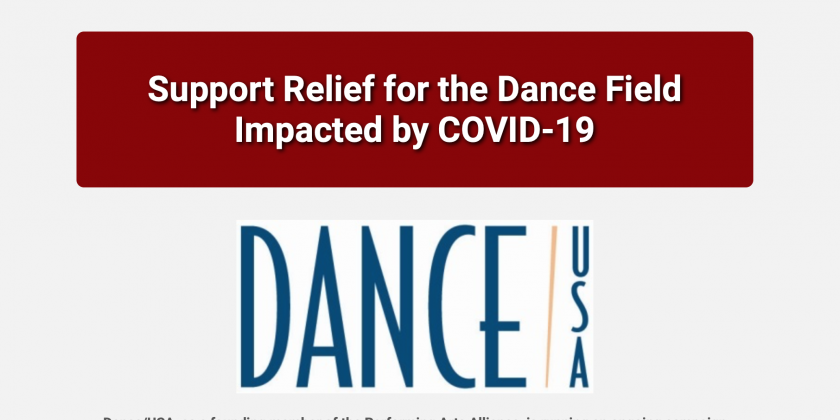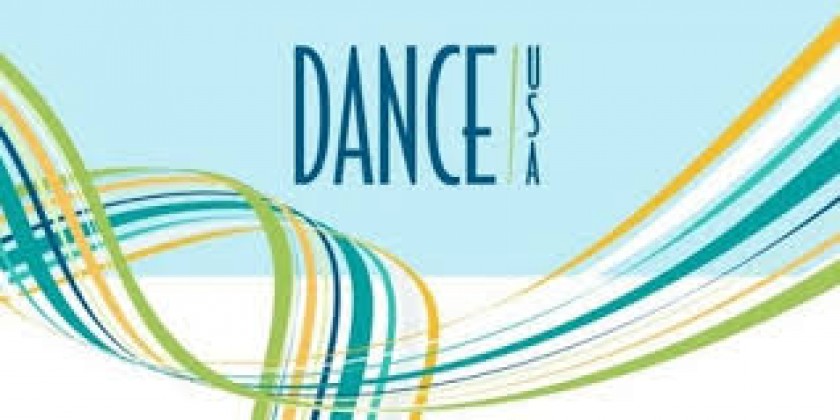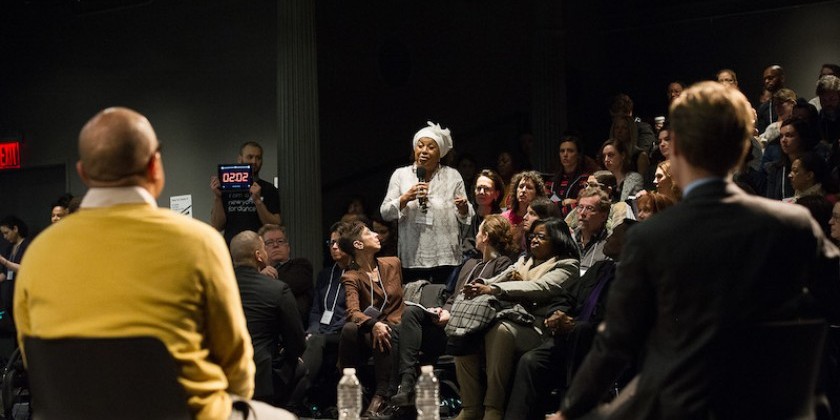Latest News from Dance/USA on COVID-19 Relief Options

Dance/USA is working in coalition with the Performing Arts Alliance, the Cultural Advocacy Group, the Charitable Giving Coalition, and others to conduct federal advocacy during this crisis.
We are grateful for the League of American Orchestras and our many coalition peers for their leadership.
Here are a few highlights of new developments within the past few days:
Families First Paid Leave Provisions: Beginning April 1, new COVID-19 related paid leave requirements will be in effect. The U.S. Department of Labor has created a 59-question FAQ for employers, posters describing employee rights under the new law, and a bulletin announcing limited enforcement through April 17, as employers learn how to come into compliance.
SBA Economic Injury Disaster Relief and Loan Advances: On March 30, the Small Business Administration (SBA) launched a new streamlined application platform for organizations and self-employed individuals applying for emergency loans directly from the SBA, including $10,000 advance payments that will be forgiven by the federal government.
Paycheck Protection Program and Loan Forgiveness: Local lenders backed by the SBA are rapidly preparing to process loan applications from employers with fewer than 500 employees, as well as applications from self-employed workers. These aim to support eight weeks of eligible costs through loan forgiveness. This week, the U.S. Department of the Treasury has posted an overview for borrowers, and an overview for lenders.
On the question of calculating the 500 employee threshold, preliminary U.S. Department Treasury guidelines to borrowers, refer to the following SBA method of calculation:
Employee calculation: This is the average number of people employed for each pay period over the business's latest twelve calendar months. Any person on the payroll must be included as one employee regardless of hours worked or temporary status. The number of employees of a concern in business less than twelve months is the average for each pay period that it has been in business.
Find the Paycheck Protection Program Application Form here. Applications will be accepted beginning April 3.
Pandemic Unemployment Benefits, Including Self-Employed individuals: Unemployment Benefits Guidance was expanded by the federal government on March 12, giving states the flexibility to expand their unemployment benefits coverage to include COVID-19 related worker displacement. Unemployment benefits will be further expanded to provide an additional $600 per week above the amount allowed under state unemployment benefits, for four months. New relief will be available for workers not eligible for state unemployment benefits, including self-employed individuals who are unable to work due to a number of COVID-related reasons, including "the individual's place of employment is closed as a direct result of the COVID-19 public health emergency."
Dance workers who otherwise do not have access to state unemployment benefits may find relief through this provision. Unemployment benefits will be available for a total of 39 weeks, and covered dates of unemployment are from January 27, 2020 through December 31, 2020. Details will be worked out in guidelines from the U.S. Department of Labor, and this relief will be administered by states. Find Your State Department of Labor.
New Charitable Giving Incentives: Building on years of advocacy by Dance/USA through our broader coalition efforts, a new universal charitable deduction is available, allowing the growing number of taxpayers who do not itemize their returns to receive a tax deduction of up to $300 for cash charitable donations to 501(c)(3) nonprofit organizations during calendar year 2020. For taxpayers that itemize returns, the limit on the total percentage of Adjusted Gross Income (AGI) eligible for the charitable deduction has been lifted. The limit on corporate contributions has been lifted to 25%.
Industry Stabilization Fund Loans: Loans may be available to nonprofits with 500 or more employees that commit to restoring 90% or more of their workforce within four months of the end of the national public health emergency. Additional requirements will apply to future workforce conditions--some of them related to collective bargaining agreements--and will merit careful consideration. Loans will be available at an interest rate of 2% or less, and payments would not be required for the first six months. The U.S. Department of the Treasury is writing guidelines for loan administration.
Employee Retention Credits: Employers that do not make use of the forgivable Payroll Protection Program loans may be eligible for a quarterly refundable payroll tax credit for 50% of wages paid by employers to employees during the COVID-19 crisis, applied to the first $10,000 in compensation per employee (resulting in a credit of up to $5,000). The extent of the credit and eligibility requirements vary depending on whether the employer has more or less than 100 employees. The U.S. Department of the Treasury is writing guidelines for administering these credits.
National Endowment for the Arts Funding: The Coronavirus Aid, Relief, and Economic Security Act (CARES) includes $75 million in funding for the National Endowment for the Arts to administer for COVID-19 assistance. Of the total, 40% of funding will be administered in partnership with state arts agencies, and the remaining resources will be delivered through direct NEA grants. The agency is authorized to make grants to support general operating expenses, and matching requirements may be waived for grants. The NEA will be rapidly providing more information about grant opportunities.
In the meantime, the NEA also announced flexibility for current grantees and FY20 applicants:
NEA FAQ for Applicants and Current Grantees
NEA to Distribute $75 Million in Relief Aid (March 27, 2020)
Statement from Arts Chairman Mary Anne Carter
Stay Tuned
Please stay tuned as Dance/USA continues to advocate for dancemakers and keeps you informed about the full array of relief provisions as further details become available.
We know that the relief provisions available will not be enough to meet all of the short and long-term needs of dance organizations, dance artists, and the communities they serve.
As Congress and the Administration consider new forms of federal economic assistance that may be targeted or widespread, dance advocates should continue to contact elected officials to let them know that further relief is needed to address the unexpected loss of event-dependent revenue, income for dancemakers, and declines in charitable contributions.














